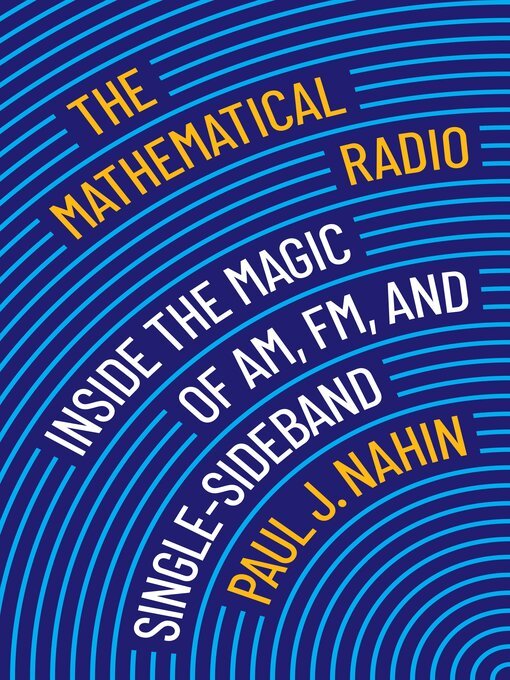Soh Kam Yung reviewed Mathematical Radio by Paul J. Nahin
An interesting book showing how the radio works mathematically
3 stars
A fascinating book that looks at the mathematics behind the operation of AM, FM and Single-Sideband radios to show how they work as transmitters and receivers. The book also goes through the history of such radios, from curiosities to hobbyists, to commercialisation and public broadcasting of radio channels and the creation of commercial radio shows.
Starting with the mathematics behind electronic components like resistors, inductors and capacitors, diodes, triodes, oscillators, amplifiers and so on, the author then uses mathematical identities and techniques (like the Fourier transform) to show how combinations of electronic components can be used to modulate an oscillating signal in various ways to produce an AM or FM signal. This modulated signal can then be received by a demodulator to extract back a representation of the information on the modulated signal.
The explanation for Single-Sideband Radio was interesting, as it is a topic mentioned during my engineering course …
A fascinating book that looks at the mathematics behind the operation of AM, FM and Single-Sideband radios to show how they work as transmitters and receivers. The book also goes through the history of such radios, from curiosities to hobbyists, to commercialisation and public broadcasting of radio channels and the creation of commercial radio shows.
Starting with the mathematics behind electronic components like resistors, inductors and capacitors, diodes, triodes, oscillators, amplifiers and so on, the author then uses mathematical identities and techniques (like the Fourier transform) to show how combinations of electronic components can be used to modulate an oscillating signal in various ways to produce an AM or FM signal. This modulated signal can then be received by a demodulator to extract back a representation of the information on the modulated signal.
The explanation for Single-Sideband Radio was interesting, as it is a topic mentioned during my engineering course but never fully explained. Here, the author first shows a brute-force method for a Single-Sideband Radio (using filters to remove a sideband) before showing other, more elegant techniques (using an 'all-pass' filter) for generating and receiving a Single-Sideband Radio signal. One interesting aspect here, that pops out of the mathematics, is that the receiver actually receives a 'scrambled' signal, where the phase components of the signal are shifted by different amounts depending on the original frequency. In practice, this phase shifting does not matter, as the human ear is able to compensate for it and still able to hear the signal.
While looking at the mathematics behind the various radios, the author also goes through the history of AM and FM radio. It starts with 'spark-gap' radios and crystal radios, which were sensitive and hard to operate and only appealed to hobbyist. The vacuum tube would herald the age of commercial radio, making radio receivers much easier to operate.
While the appeal of radio may now be less, due to the internet, it was an important technology that helped spread news and entertainment to the world, and it is good to have a book that shows how radios work mathematically, even if the actual components used to implement a radio now would be different from those used in the past.

